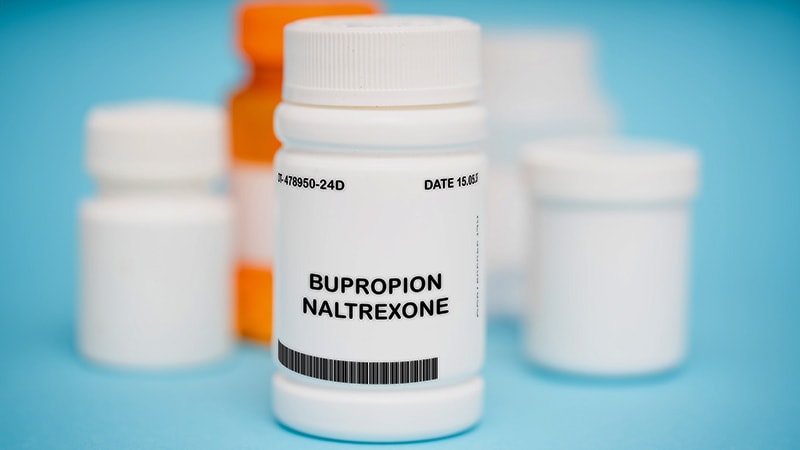
TOPLINE:
Compared with placebo, extended-release naltrexone-bupropion combination therapy reduced total fat mass and improved the lean-to-fat mass ratio in individuals with obesity or overweight and controlled hypertension, dyslipidemia, or both.
METHODOLOGY:
- Although most weight-loss studies focus on overall body weight or body mass index (BMI) as outcomes, changes in body composition are often overlooked, despite being associated with several key health improvements.
- Researchers conducted a sub-study of the COR-I trial to evaluate the effects of extended-release naltrexone-bupropion on body composition, among participants who underwent dual-energy x-ray absorptiometry (DEXA) at baseline and week 52.
- Participants in CORI-I had either a BMI of 30-45 and uncomplicated obesity or BMI ≥ 27 with controlled hypertension or dyslipidemia.
- They were randomized to receive either 32 mg of naltrexone with 360 mg of bupropion daily, 16 mg of naltrexone with 360 mg of bupropion daily, or placebo.
- All participants were instructed to follow a hypocaloric diet (500 kcal deficit per day) and given lifestyle modification advice.
- The primary goal of this sub-study analysis was to assess the absolute change in total fat mass from baseline to week 52; secondary objectives included the assessment of changes in total fat and lean mass from baseline to week 52.
TAKEAWAY:
- Researchers included 82 participants (mean age, 45.6 years; 84.1% women) with comparable baseline characteristics, of whom 56 received naltrexone-bupropion and 26 received placebo.
- At week 52, a significant mean reduction in total body mass was observed in the naltrexone-bupropion group vs the placebo group (7.2 kg vs 2.8 kg; P